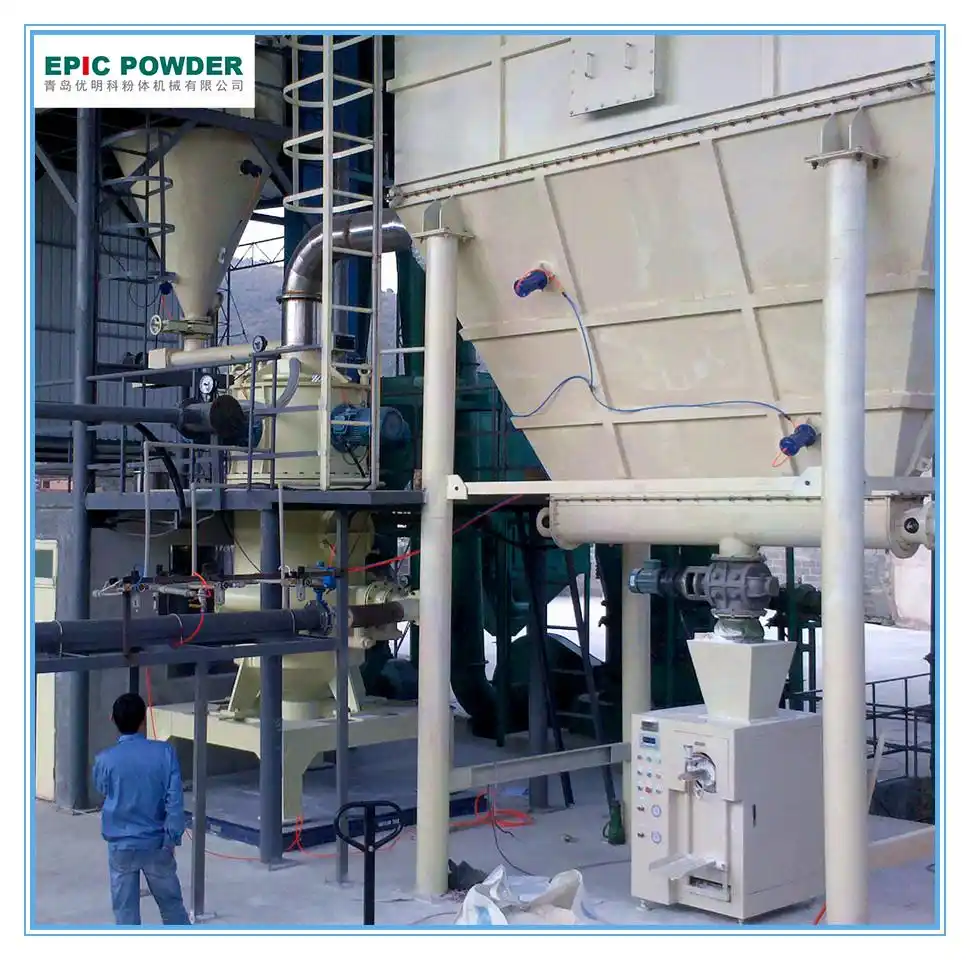Na indústria de moagem de pós ultrafinos, a eficiência energética é uma consideração fundamental tanto para fornecedores de equipamentos quanto para usuários finais. Moinhos a jato, amplamente utilizados para moer minérios e minerais em pós superfinos, consomem energia elétrica significativa durante a operação. Entender quanta energia é necessária para moer uma tonelada de minério ajuda a otimizar a eficiência do processo.

Visão geral do consumo de energia em processos de moagem
A moagem e a moagem no processamento de minerais estão entre as etapas que mais consomem energia nas operações de mineração. Em sistemas de moagem, o consumo de energia pode variar amplamente, dependendo da dureza do material, do tamanho de partícula necessário e do projeto do moinho. Normalmente, moinhos industriais consomem energia elétrica medida em quilowatts-hora por tonelada (kWh/t) de minério processado.
Por exemplo, na indústria de cimento, moinhos de bolas consomem cerca de 10 a 25 kWh/t, dependendo da dureza do material. Moinhos de rolos normalmente consomem de 4,5 a 8,5 kWh/t. Esses números destacam a enorme demanda energética da moagem e o potencial de otimização por meio de projetos avançados de moinhos e controle operacional.
Moinhos de jato e seu perfil energético
Os moinhos a jato utilizam ar de alta velocidade para moer e classificar partículas simultaneamente. Isso os torna altamente adequados para pulverização ultrafina, como na produção de minérios, minerais e pós químicos. O consumo de energia dos moinhos a jato depende das propriedades físicas do material moído, do tamanho da alimentação, da velocidade do ar e da operação do classificador.
Os circuitos de moagem de minério de magnetita consomem até aproximadamente 33 kWh/t de minério processado nas etapas de moagem. Esse valor está dentro da faixa superior da demanda energética para moagem de minério na indústria. A etapa de classificação também afeta significativamente o consumo de energia devido às cargas do soprador de ar e do motor do separador.
Principais fatores que influenciam o consumo de energia dos moinhos a jato
A modelagem avançada de plantas de moagem de cimento revelou variáveis-chave que influenciam o consumo de energia em circuitos de moagem, relevantes também para moinhos a jato. As variáveis operacionais com maior impacto incluem a corrente de elevação de ar (volume e velocidade do fluxo de ar) e a corrente do motor do separador (eficiência de classificação). Esses fatores também influenciam de perto a produtividade do moinho e o consumo de energia da moagem.
O controle e a otimização desses parâmetros podem levar a reduções substanciais no consumo de energia, mantendo a qualidade do produto e o desempenho da moagem. Além disso, o treinamento contínuo dos operadores e o monitoramento do processo são essenciais para alcançar operações com eficiência energética.
Suporte de dados da indústria com métricas de consumo de energia
• As usinas de moagem de cimento normalmente consomem de 110 a 120 kWh de eletricidade por tonelada de clínquer produzida, com a moagem representando cerca de 40% do consumo total de eletricidade. Isso sugere 44 a 48 kWh por tonelada exclusivamente para moagem em contextos de cimento.
• Estudos da indústria de mineração indicam que a intensidade energética total para o processamento de minério de ferro (incluindo moagem e beneficiamento) atinge cerca de 0,3 GJ/t, o equivalente a aproximadamente 83 kWh/t de minério processado. Somente os circuitos de moagem respondem por cerca de 33 kWh/t.
• Outros métodos de moagem, como moinhos a jato, consomem energia na faixa de vários kWh/t, dependendo do material e do tamanho do alvo. O conhecimento das densidades de energia de moagem auxilia na modelagem termodinâmica e de eficiência do processo.
Implicações ambientais e econômicas
O consumo de energia na moagem afeta diretamente os custos de produção e a pegada de carbono das indústrias de mineração e minerais. Como a moagem de minérios consome muita energia, melhorias na eficiência dos moinhos a jato podem levar à redução de custos operacionais e contribuir para as metas de sustentabilidade. A otimização dos padrões de ar, das configurações do classificador e dos meios de moagem em moinhos a jato está entre as estratégias para reduzir o consumo de energia sem comprometer a qualidade da produção.
Pó épico
Como fabricante líder de equipamentos de moagem ultrafina, Máquinas de pó EPIC enfatiza tecnologias de economia de energia. Nossa missão é apoiar parceiros de mineração e processamento de minerais em todo o mundo a alcançar alta produtividade com consumo mínimo de energia.